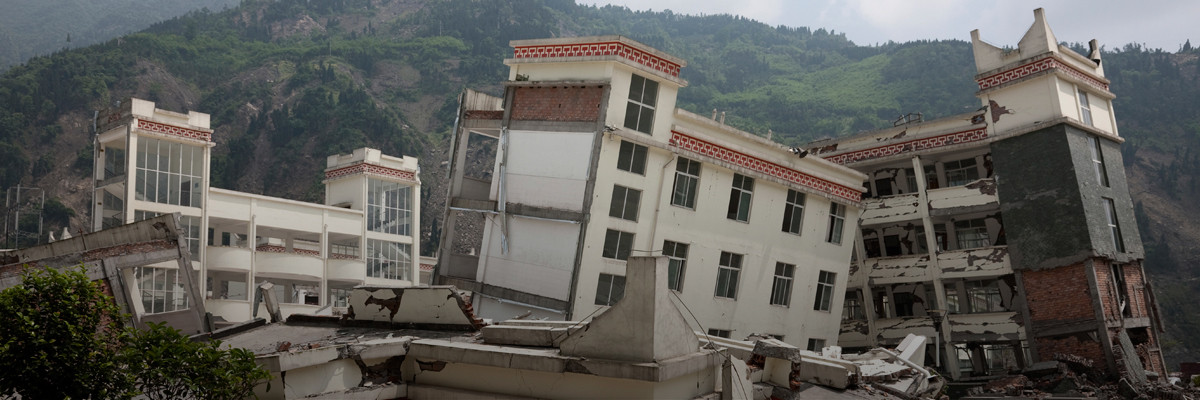
Authors
-
Alison Colwell
Former Associate Director, BSR
Today, we live in an era in which economic, environmental, social, and cultural changes can create new realities overnight. Imagine three different scenarios.
In the first, an earthquake strikes the developing world (as has happened in Haiti and Indonesia), destroying homes, roads, hospitals, schools, stores, electricity lines, and water sanitation systems, leaving hundreds of people homeless, without access to shelter, clean drinking water, food, energy, and healthcare. In the second scenario, imagine an economic boom due to rapid industrial growth (such as in the Silicon Valley’s technology sector or a new mine development in a rural community in Chile), which results in new jobs and economic and social development, as well as rapid population growth, and at times, increased cost of living, housing shortages, and increased demand on infrastructure such as public transportation, health, and education services. Finally, imagine the closure of a company that employs 25 percent of the people in the local town, resulting in a regional depression.
What happens to the people in these communities?
The difference between communities that survive and thrive and those that flail and fail is resilience. Resilient communities have the ability to provide social equity for all and are, by nature, adaptive. Given the rapid nature of change today—and the threat to the communities where companies invest and operate—business has an important role to play in helping create resilient communities. At the BSR Conference 2015, taking place November 3-5 in San Francisco, we have a special track of sessions that will explore how companies can build resilient, sustainable communities.
The creation of sustainable local communities is a key pillar of BSR’s Business Leadership for an Inclusive Economy strategy. We envision a future in which all individuals and communities participate in, benefit from, and contribute to global and local economies—and we believe investments in good jobs, access to critical goods and services, and sustainable communities will help get us there.
But what are resilient, sustainable communities?
Answering that question isn’t easy. Individual communities—and people within them—have diverse definitions of resilient communities. But there are some common attributes. Resilient communities have social cohesion and the ability to adapt and work collectively to respond to disasters and shocks. They have diversified economies so that if one large employer moves out, there are other job opportunities. These communities respect and include diverse cultures and perspectives. They also share some practical traits, like sound environmental plans; strong education and training systems; and long-term, integrated, community-created sustainability planning. According to Rockefeller Foundation’s 100 Resilient Cities program, city resilience is “the capacity of individuals, communities, institutions, businesses, and systems within a city to survive, adapt, and grow no matter what kinds of chronic stresses and acute shocks they experience.”
From what I have seen during my years of work helping companies invest in sustainable communities, resilient communities have three common attributes: They value and use their assets; understand and address their challenges; and are able to adapt, recover, and rebuild.
Examples of resilient communities exist both in the developed and the developing world. Whistler, British Columbia, for instance, recognized the environmental and economic value of the community’s natural assets and included “building a stronger resort community” as one of its priorities. In doing this, the community considered environmental and social factors, as well as rights of future generations when making development decisions. It also conducted genuine community engagement in order to establish new protected areas networks, develop energy and air-quality plans, and develop the community’s overarching sustainability plan.
Another example is Porto Alegre, Brazil, which spent decades using a participatory budgeting process to address extreme disparities in income and quality of life. This has resulted in new public housing units, schools, and water and sewer connections. Today, Porto Alegre has a new challenge: Its unprecedented population growth has led to urban issues, such as housing in areas where floods and landslides are common and an explosive growth in the number of cars. To address this, the city is again following its participatory approach and has established a multistakeholder working group to build an urban resilience plan. (Porto Alegre is a part of the 100 Resilient Cities project.)
As our world continues to change, with globalization, technological innovation, and issues like climate change and growing inequality placing pressures on local communities, it is more important than ever that business assume a role in investing in resilient communities. In the end, these investments will create short- and long-term benefits for communities and business alike.
The BSR Conference 2015, November 3-5 in San Francisco, will feature a series of sessions on the resilient community. Learn more about our Conference at bsr15.org.
Let’s talk about how BSR can help you to transform your business and achieve your sustainability goals.